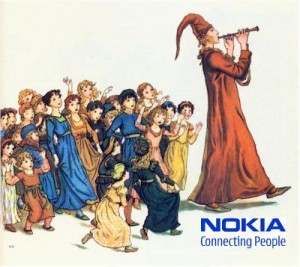 In his PR Squared blog post “When Clients Want Coverage in Your Blog: Social Media Ethical Dilemmas,” my buddy Todd Defren frames the debate with the following two questions:
In his PR Squared blog post “When Clients Want Coverage in Your Blog: Social Media Ethical Dilemmas,” my buddy Todd Defren frames the debate with the following two questions:
Should clients be allowed to leverage the agency’s (or its staffers’) brand to promote their own? Should the agency principal ask a well-known staff blogger to write about a client’s news/products?”
Even those of us with comparatively modest numbers of followers have been leaned on by clients to plug them in our posts or tweets. (The latter channel for me has the extra reverb of my Friendfeed, Facebook, Ping.fm, Google Buzz, and LinkedIn pages.)
I also happen to agree with Todd’s philosophy about using one’s personal and professional pulpit for promotional purposes:
“Honestly I don’t have a hard & fast rule here, my judgment is based on whether y-o-u will get value from the post. Given that this is a blog about Marketing/PR/Social Media, the client’s news or product would need to fit in that category, or else I am wasting your time.”
Still, there seems to be a feeding frenzy among agencies to hire those with “followings.” How often do we hear about some blogger or active Twitter user, with relatively meager PR credentials, getting gobbled up by one agency or another? Was it the size of their spheres of megaphonic influence that sealed the deal or their PR smarts? Maybe the two are related? And how are they positioned to clients clamoring for a little more Twitter juice?
But I digress. One way to circumvent a potential loss of cred among their flocks by those who socially shill for their agency’s clients is through the proper disclosure in their posts or tweets. Adding (in parenthesis) the word “client” seems to be the preferred mode for making it all OK.
There are other methods for codifying the disclosure of paid relationships, including WOMMA’s “Ethics Assessment Tool,” cmp.ly’s “simple disclosure solution,” Sponsored Tweets’ “Disclosure Engine,” and Izea’s Code of Ethics. (Thanks to Converseon‘s Constantin Basturea for pointing out some of these.)
Now what if I were to tell you that one’s number of followers and conversations mined on Twitter or Facebook may not be the end-all for identifying (and cultivating) influencers? I have one client (wit: full-disclosure) whose Israeli developed analytics technology skips the public conversations altogether for pinpointing influencers AND their followers.
The company, called Pursway, has figured out how to apply its algorithm to the voluminous amount of behavioral data that resides in its clients’ internal customer databases. Here’s a short item from TechCrunch. Once influencers and their followers are identified, Pursway develops engagement/cultivation programs exclusively for the influencers, which ultimately yields (for the company’s 20+ clients) a 5-10x increase in customer acquisition, retention and cross-selling.
In truth, I was a little reluctant to post on this client, but, like Todd, I concluded that the topic resides in my editorial sweet spot and also provides value to the more analytics-minded followers of this space. And a hat tip to Todd for his inspiration.
性愛自拍,美女寫真,亂倫,戀愛ING,免費視訊聊天,視訊聊天,成人短片,美女交友,美女遊戲,18禁,三級片,自拍,後宮電影院,85cc,免費影片,線上遊戲,色情遊戲,日本a片,美女,成人圖片區,avdvd,色情遊戲,情色貼圖,女優,偷拍,情色視訊,愛情小說,85cc成人片,成人貼圖站,成人論壇,080聊天室,080苗栗人聊天室,免費a片,視訊美女,視訊做愛,免費視訊,伊莉討論區,sogo論壇,台灣論壇,plus論壇,維克斯論壇,情色論壇,性感影片,走光,色遊戲,情色自拍,kk俱樂部,好玩遊戲,免費遊戲,貼圖區,好玩遊戲區,中部人聊天室,情色視訊聊天室,聊天室ut,成人遊戲,免費成人影片,成人光碟,ut聊天室